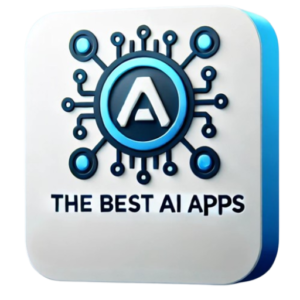Introduction to ChatGPT: Understanding Its Importance

ChatGPT represents a significant advancement in the field of artificial intelligence and natural language processing. At its core, ChatGPT is built on the GPT-3 architecture, a state-of-the-art model developed by OpenAI. This model has revolutionized the way machines understand and generate human language, making it a crucial tool in today’s digital sphere. The capabilities of ChatGPT extend far beyond simple text generation; it can engage in conversation, answer questions, and assist users in various writing tasks.
The relevance of ChatGPT has grown particularly in industries that rely heavily on communication, such as customer service, education, and content creation. Within customer service, for instance, businesses are integrating ChatGPT into their systems to provide quick and efficient responses to customer inquiries, thereby enhancing user experience and operational efficiency. Moreover, in the educational sector, ChatGPT acts as a valuable resource for students and educators alike, offering assistance in research and fostering interactive learning experiences.
One of the standout features of ChatGPT is its ability to generate human-like text, which has significant implications for content creators. This capability not only aids writers in brainstorming and drafting articles but can also streamline the processes of editing and revising, ultimately enhancing overall productivity. By harnessing the power of natural language processing, ChatGPT serves as a versatile assistant, capable of adapting to various contexts and user needs.
As we move forward in an increasingly digital world, understanding the importance of tools like ChatGPT is essential. The potential applications are vast and varied, making it a critical element in the evolution of human-computer interaction and the broader landscape of technology. As businesses and individuals alike continue to explore its functionalities, the impact of ChatGPT on communication and productivity will undoubtedly become more pronounced.
Step-by-Step Guide to Using ChatGPT

To begin using ChatGPT, the first step is to access the platform through OpenAI’s official website or its application programming interfaces (APIs). If you are using the web version, simply sign up or log in to your OpenAI account. For those who prefer API integration, developers can refer to the OpenAI API documentation to obtain the necessary API key and establish a connection with their applications.
Once access is granted, it is essential to draft effective prompts to attain desirable outputs. A clear, concise prompt often yields better responses from ChatGPT. Instead of vague inquiries, consider being specific about what you require. For instance, instead of asking, “Tell me about marketing,” you could refine the prompt to, “Provide an overview of digital marketing strategies for small businesses.” This focus helps the model understand and respond aptly to the request.
After receiving an initial response, users may wish to refine the output further. This can be done by providing feedback directly in your prompts, asking for clarification or specific details. For example, if the first response doesn’t cover your needs, you can say, “Expand on the benefits of social media marketing.” Additionally, utilizing examples or context can greatly enhance the richness of the response, allowing ChatGPT to cater better to your requirements.
ChatGPT can be employed in a wide array of scenarios, such as generating marketing content, answering user queries, or aiding in research activities. Each of these applications showcases ChatGPT’s versatility and capabilities. By experimenting with different prompts and contexts, users can discover its full potential, thereby enhancing productivity and creativity across various tasks.
Actionable Tips for Maximizing ChatGPT’s Potential
To fully leverage the capabilities of ChatGPT, it is essential to adopt a strategic approach. Tailoring your prompts is a critical first step in this process. Instead of vague requests, consider being specific and concise. For example, instead of asking, “Tell me about climate change,” you could frame your prompt as, “What are the main causes of climate change and their impact on polar ice caps?” This specificity helps the model generate targeted and accurate responses, thereby enhancing your overall experience.
Using contextual information can significantly improve the quality of interactions as well. Providing background details relevant to your request helps ChatGPT understand your needs better. For instance, if you are seeking advice on project management, sharing specifics about the project’s scope and timeline can lead to more personalized suggestions. By offering context, users can guide the model to produce responses that align closely with their expectations.
It is also crucial to be aware of common pitfalls when engaging with ChatGPT. One common mistake is asking too many questions in a single prompt. This can overwhelm the model and lead to incomplete or unfocused answers. Instead, prioritize your questions and ask them one at a time to maintain clarity. Additionally, be prepared to iterate. If the first response does not meet your needs, refining your prompt based on what you received can help unlock more useful information.
Integrating ChatGPT into daily workflows is an effective way to enhance productivity. For instance, professionals can utilize the model for drafting emails, brainstorming ideas, or summarizing reports. By incorporating it into routine tasks, users often report increased efficiency and creativity. Real-world user testimonials highlight cases where ChatGPT has transformed team collaboration by streamlining communication and idea generation. Overall, these actionable tips underscore the model’s potential as a valuable resource in various contexts.
Conclusion: Key Takeaways and Future of ChatGPT

In summation, the exploration of ChatGPT has highlighted its remarkable versatility across various sectors, including customer service, content creation, and education. By understanding its capabilities, users can leverage this powerful AI language model to enhance operational efficiency, streamline communication, and foster innovation. The numerous applications of ChatGPT not only demonstrate its effectiveness in addressing diverse needs but also underline its adaptability to evolving demands in dynamic environments.
Looking ahead, the future of AI language models like ChatGPT appears promising as researchers and developers continue to make significant advancements. Innovations in natural language processing, machine learning algorithms, and user interface design are expected to further enhance the user experience and expand the possibilities for deployment in various fields. As organizations increasingly adopt AI technologies, the potential exists for more sophisticated interactions, enabling more nuanced understanding and contextual relevance. This evolution signifies a transformative shift in how businesses, educators, and individuals engage with technology.
As we conclude this guide, we encourage readers to explore and experiment with ChatGPT in their personal or professional domains. Engaging with the platform will not only deepen understanding but also unlock its full capabilities. The importance of practice cannot be overstated—through active utilization, users can discover unique functionalities and innovative applications tailored to their specific needs. Ultimately, the key to harnessing the power of ChatGPT lies in curiosity and exploration, paving the way for endless opportunities with AI-driven systems.







